
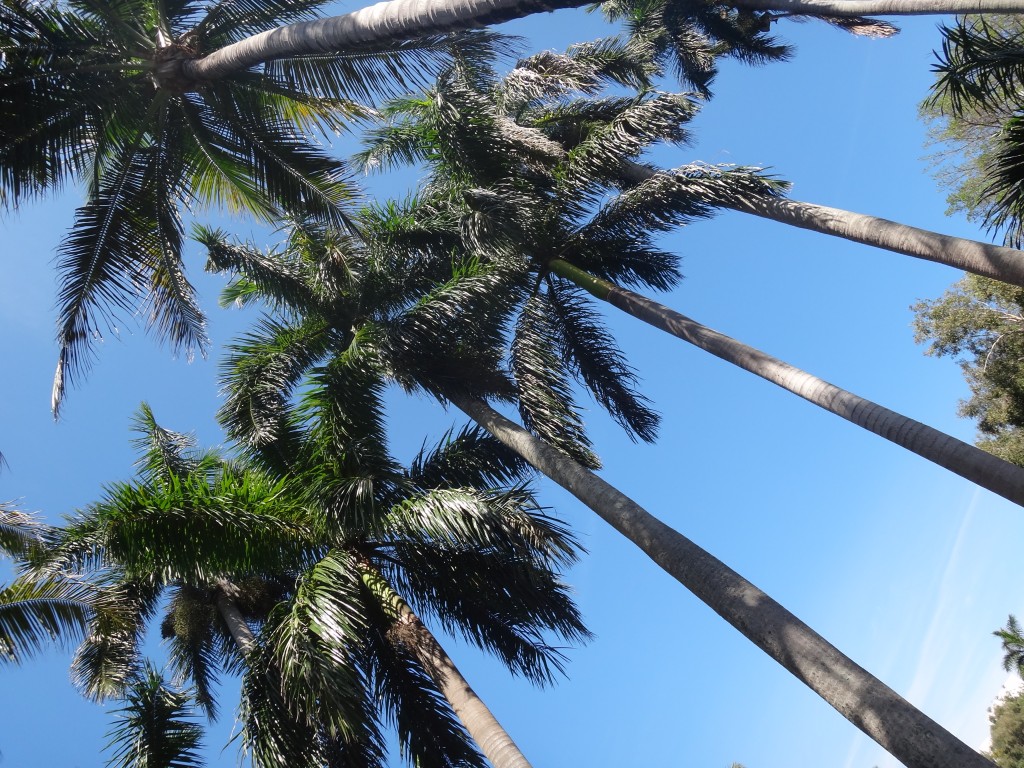
I have recently been traveling back and forth to Florida on business,
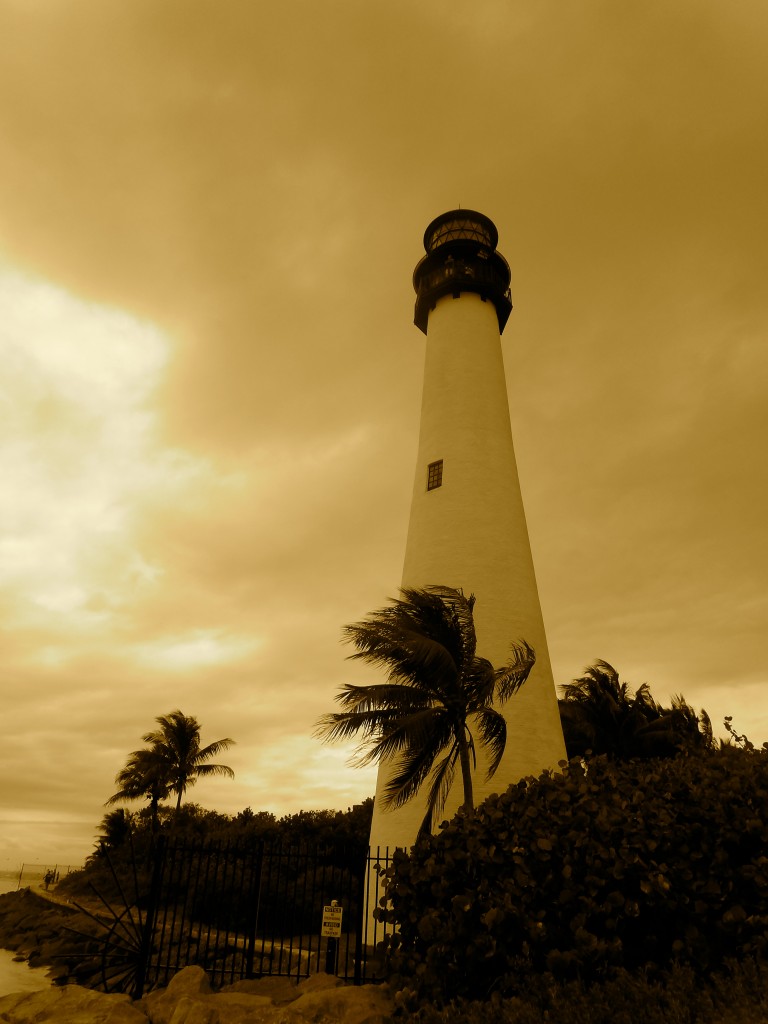
soaking up the sights,
I recently took some time to tour around a rather remarkable place called Bonnet House, slap bang in the middle of the coastal hi-rise hotels of Ft Lauderdale by-the-sea.

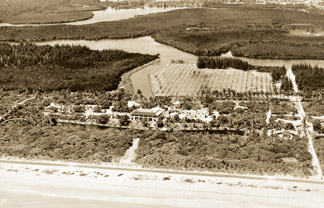

Construction on Bonnet house (named for the bonnet lily,
Nymphaea odorata
that grows here) began in 1920 and continued for 20 years. Alligators that resided in the ponds on the property would purportedly surface with lilies on the top of their heads that resembled, you guessed it, bonnets.
The land was given to Frederic Clay Bartlett, an American artist and his wife Helen by her father, Hugh Taylor Birch as a wedding gift. When work began on the house this part of the Florida coastline was a natural wilderness.
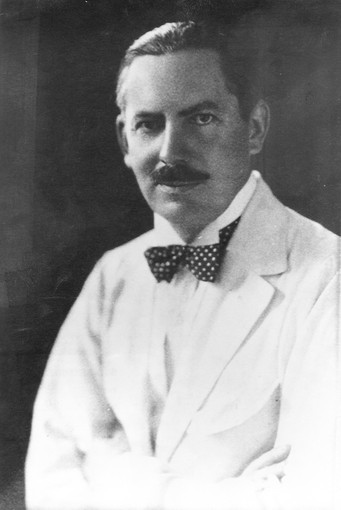
Frederic and Helen traveled extensively and were avid art collectors. Helen passed away in 1925 of cancer before the construction ended. Six years after Helen’s death in 1925 Frederic married Evelyn Fortune Lilly. Frederic passed away in 1953 but Evelyn continued to winter at Bonnet house and in 1983 she deeded the house to the Florida Trust for Preservation.

It is the last protected and undeveloped area of the Florida coastline for miles.
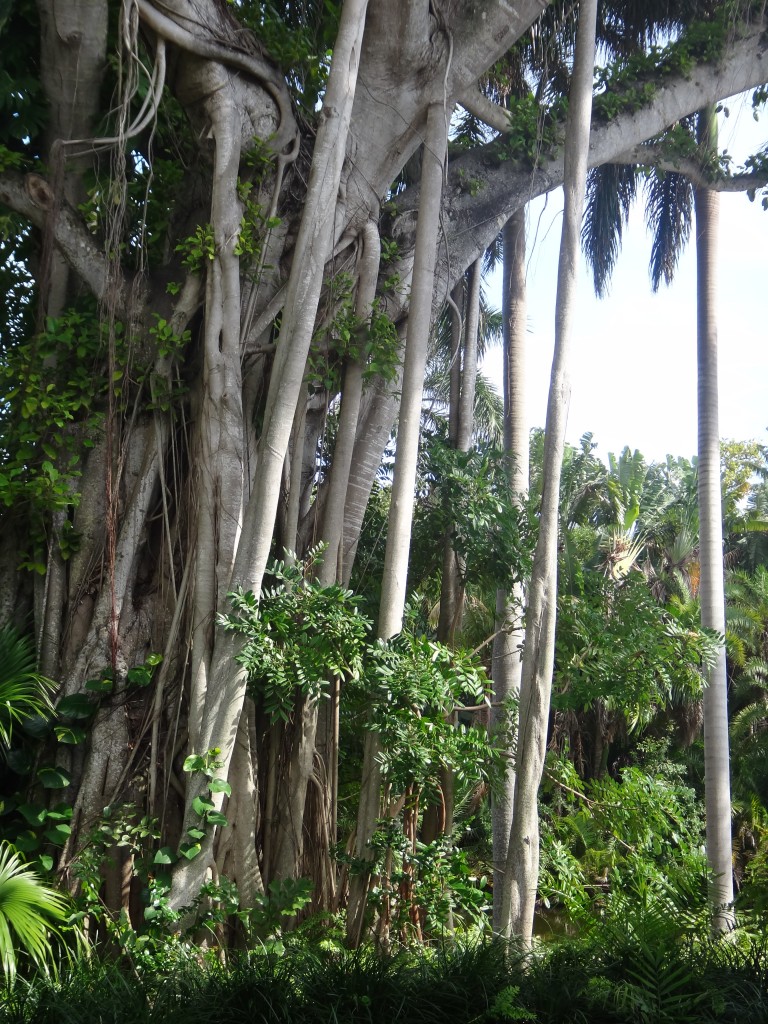
The grounds of the property contain some amazing Ficus ‘banyan’ trees. This is actually a single tree with secondary trunks arising from its branches, these futuristic trunks are known as aerial roots, and they are huge.
Aerial roots allow these trees to survive on inhospitable terrain such as rocks and even other trees.
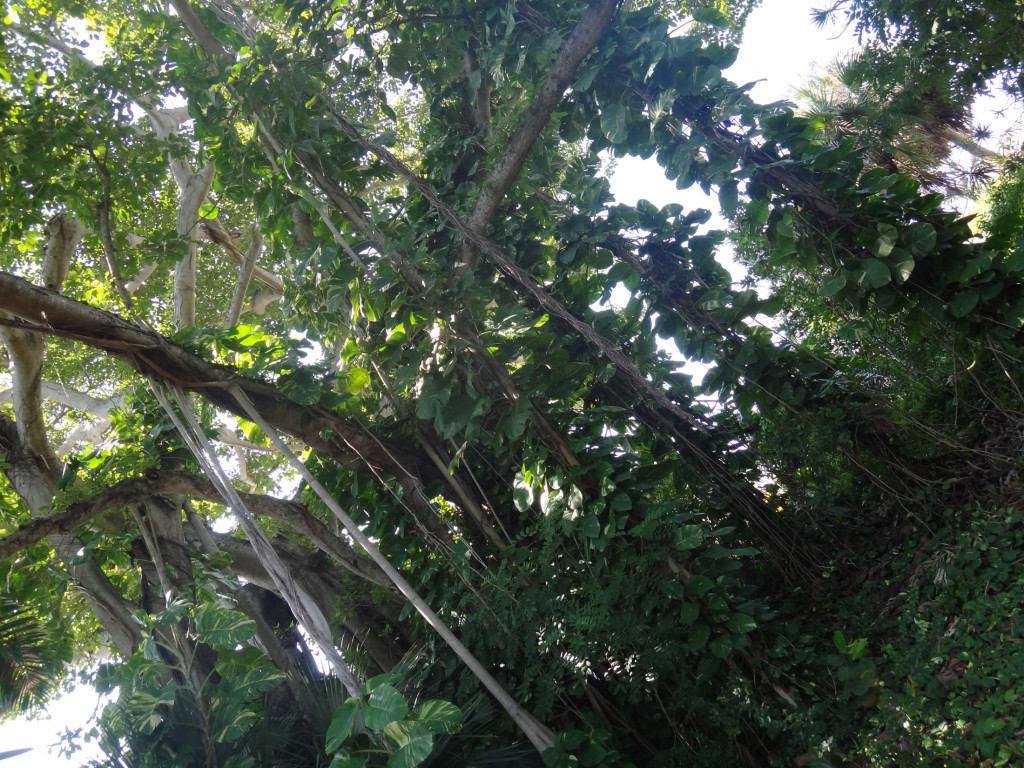
Many types of figs start their lives on other trees, these are called strangler or epiphytic figs and can be a problem in tropical and humid areas. Named after the Asian Indian traders who used the trees as shade to conduct their business, banyan refers to the style of these trees which is not specific to Ficus, other banyan trees include Schefflera, Pandanus and mangrove. I am not sure what the climbing variegated ginger-looking plant is in the above shot but it had spread to a ridiculous height in the upper canopy.
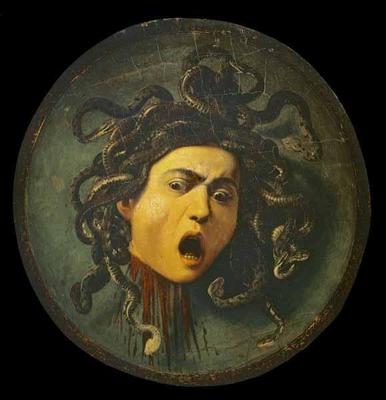
Michelangelo Merisi da Caravaggio (1571 – 1610)
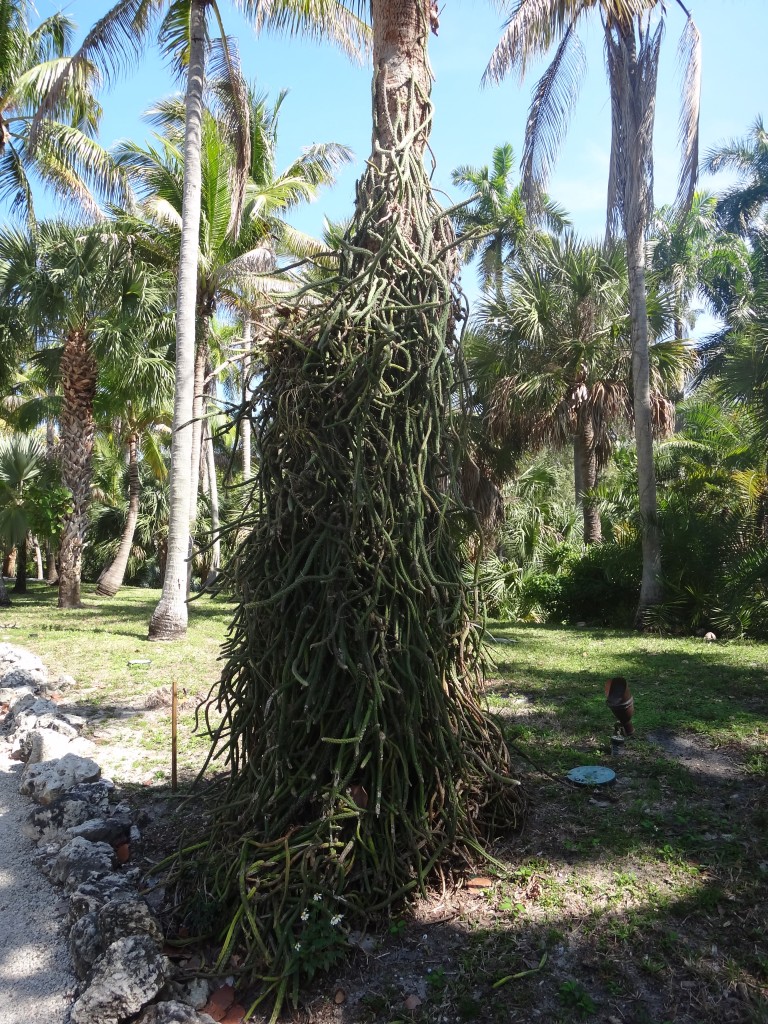
Talking of climbing, this climbing cactus on the property was clawing and snaking its way up the trunk of this unfortunate palm tree.
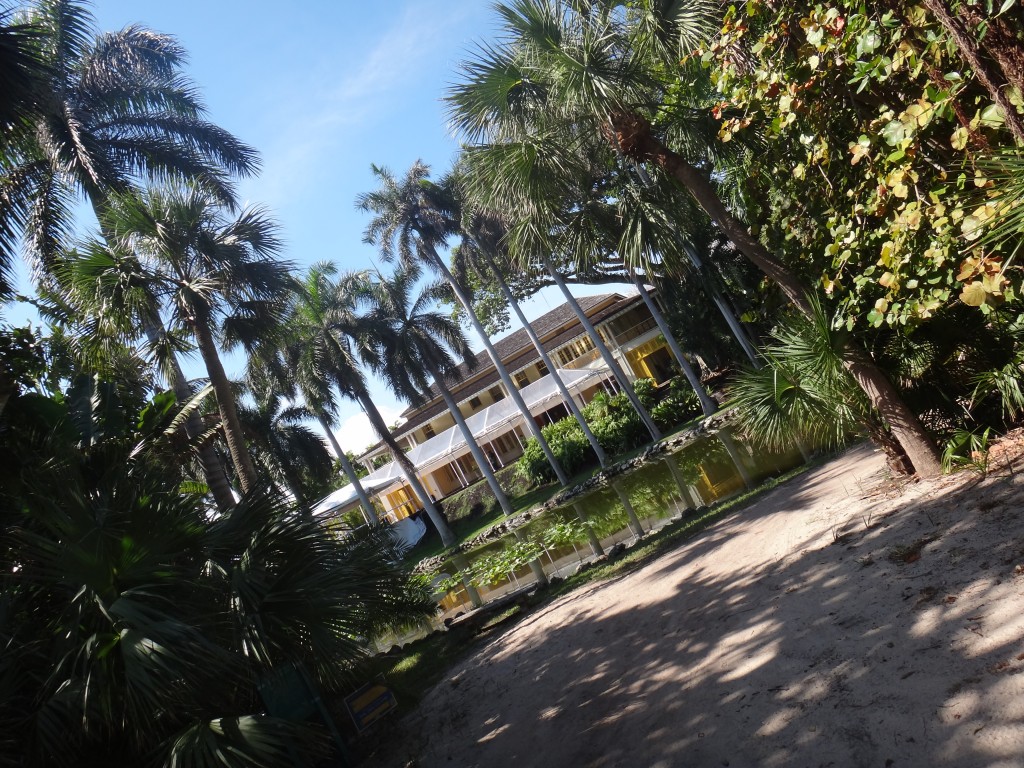
Bonnet House.

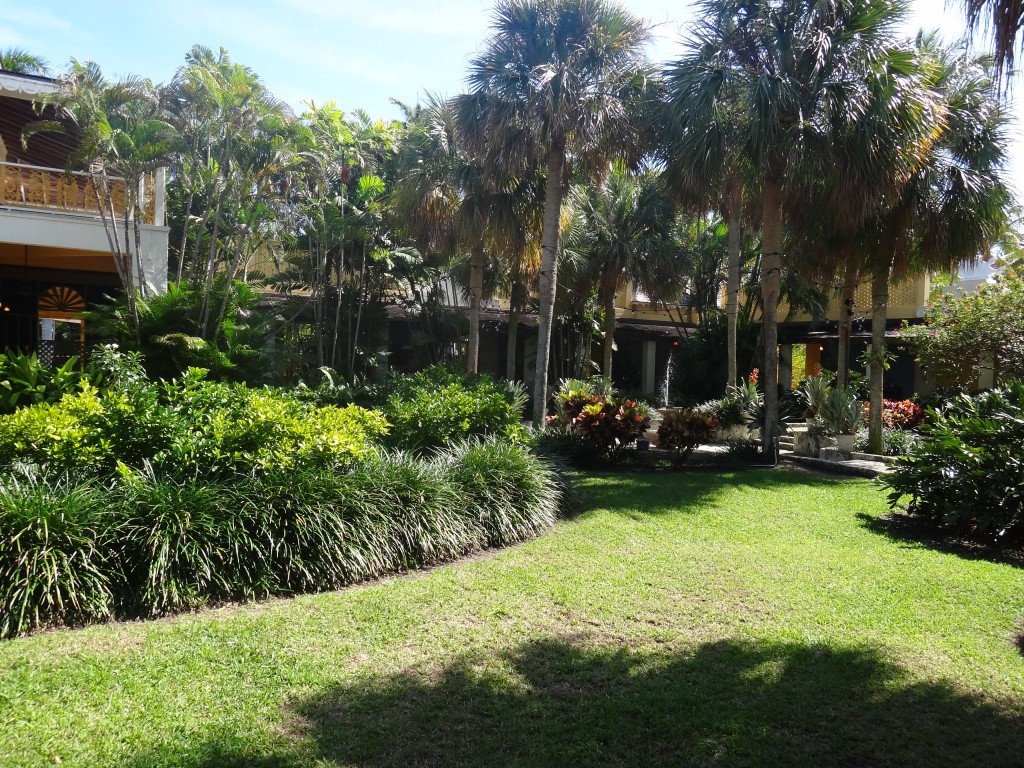 Most of the house has been hand painted by Frederic, unfortunately pictures were not allowed on the inside of the house.
Most of the house has been hand painted by Frederic, unfortunately pictures were not allowed on the inside of the house.
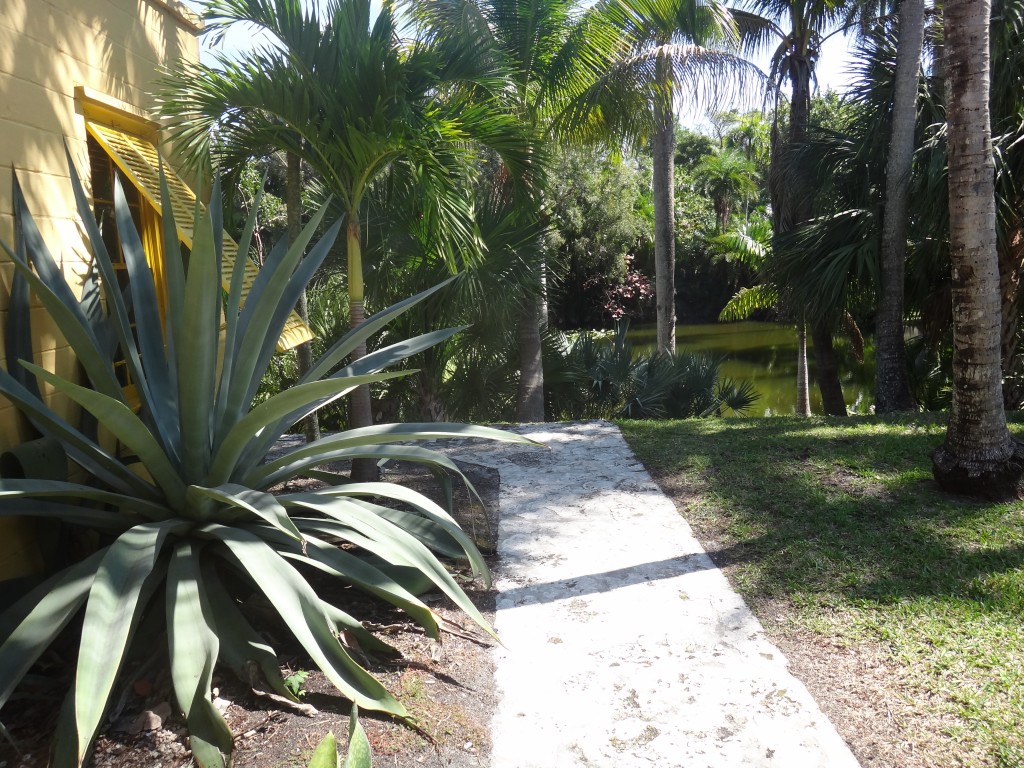
Impressive agaves line the pathways.
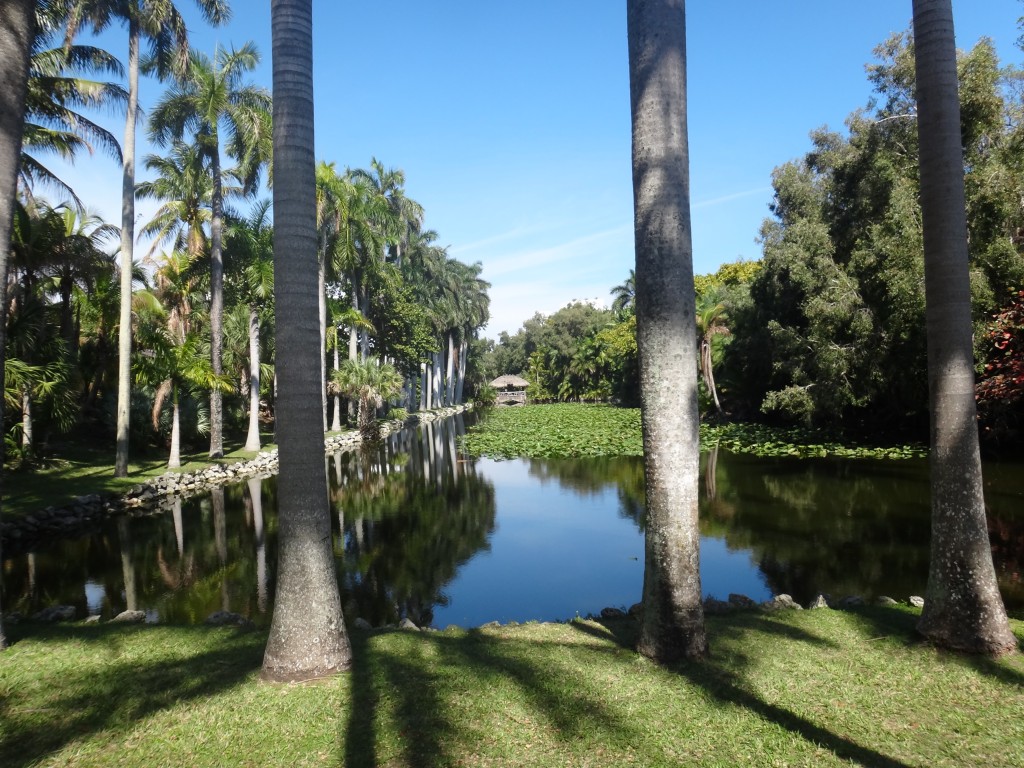
I will finish this Florida segment with a hop to the beach, where else?
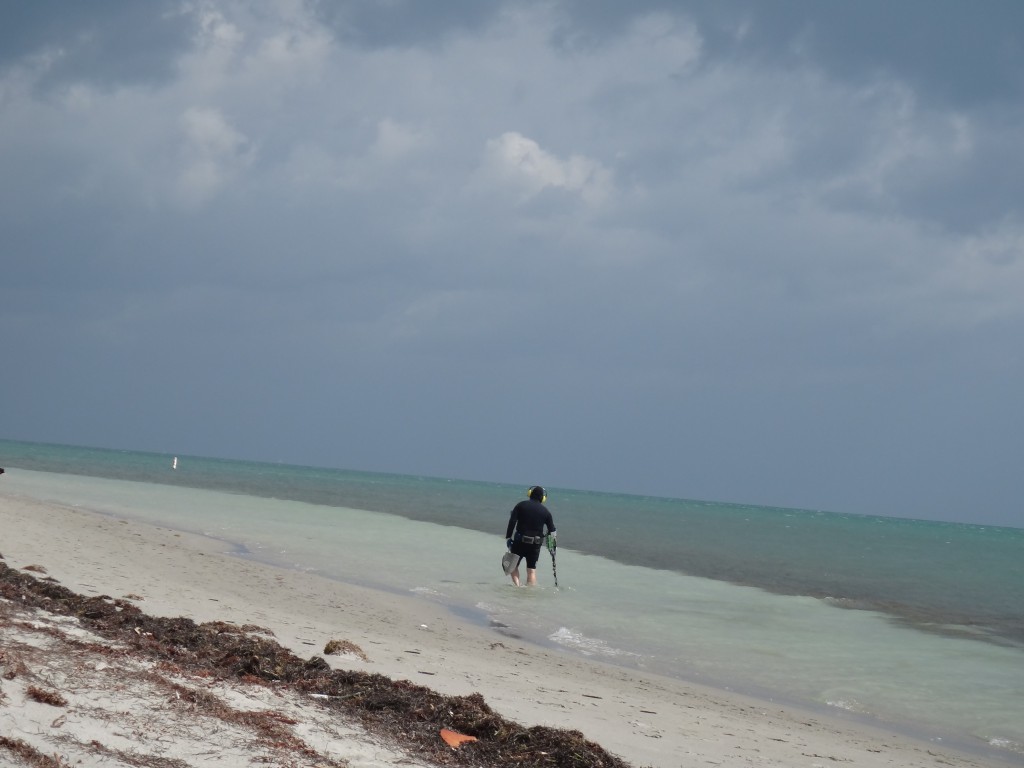
This sea-weedy coastline is Biscayne National Park just south of Miami. The snorkeling chap was actually metal detecting underwater. I had a brief conversation with him as he exited the water and found out that he finds jewelry that drops from sea-shrunken digits, some of it quite nice jewelry.
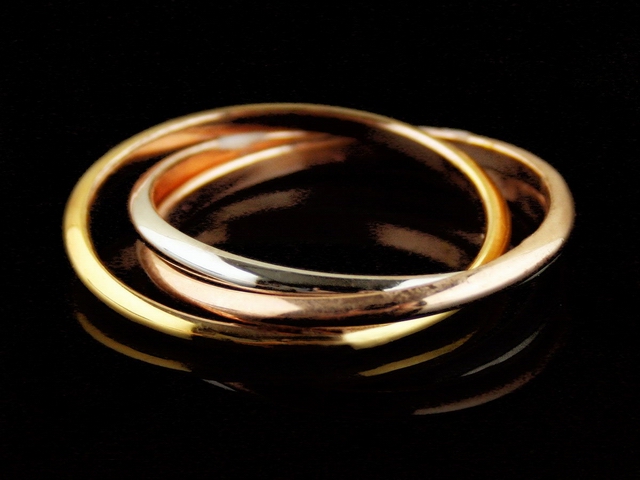
His best find to date was a Cartier ring.

Metal detecting, underwater?
I know someone who is already extremely interested in this activity…
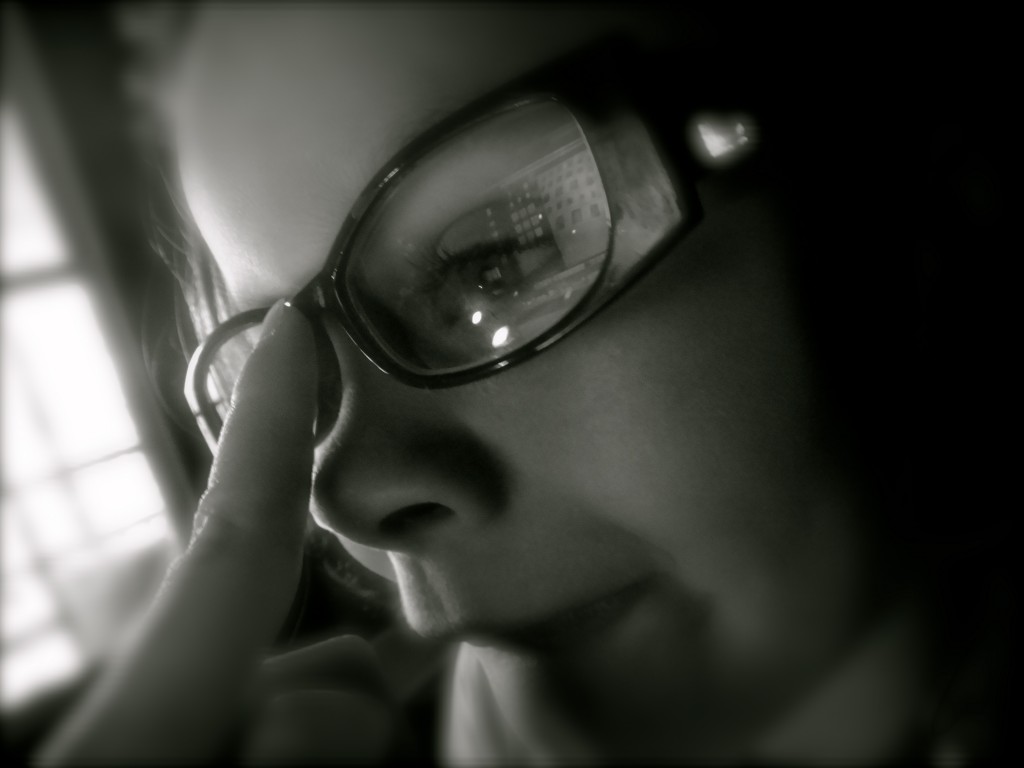
She is, as I type, figuring out what chores command the highest allowance value to cover the purchase cost of a waterproof metal detector.
Paddling around in the warm waters I reached blindly under the waves and pulled out what I thought was just a rock.
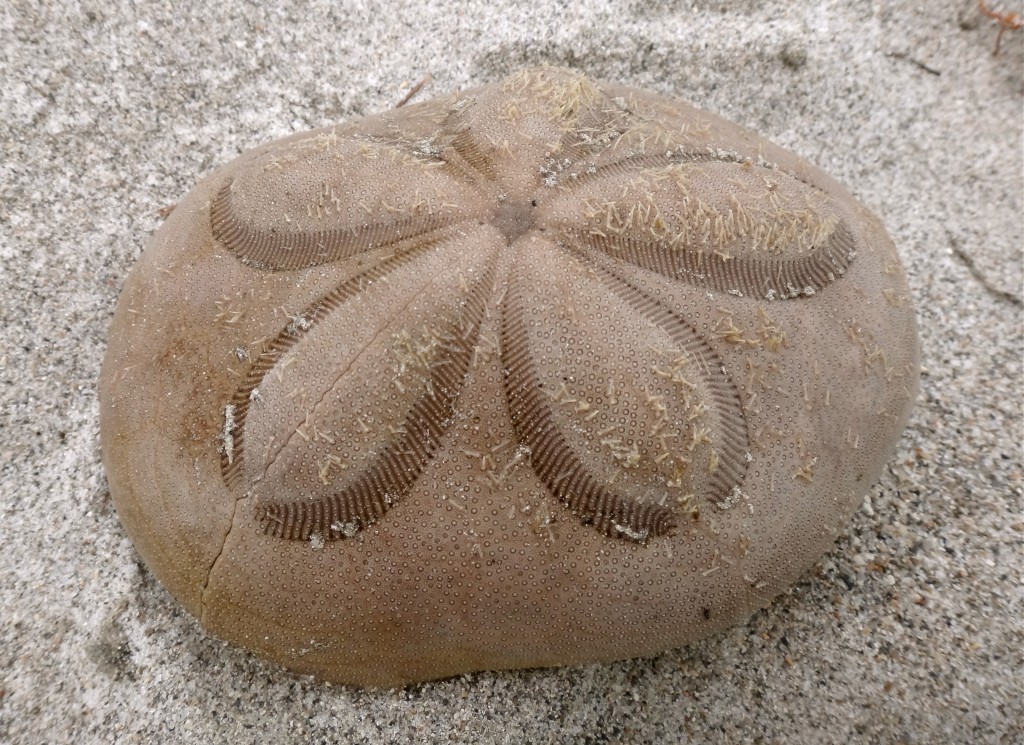
to my surprise it turned out to be a live sand dollar, (the dead bleached ones are thought to be the standard currency of mermaids that have washed-up from the deep ocean).
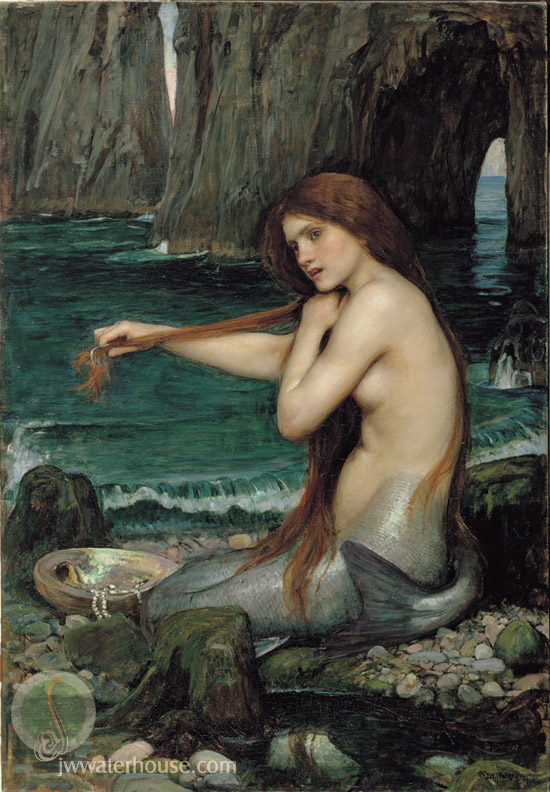
John William Waterhouse: A Mermaid – 1901
Sand dollars are from the class of marine animals known as Echinoids, spiny skinned creatures. Their relations include the sea lily, the sea cucumber, the star fish and the sea urchin. When alive,
Echinarachnius parma
is outfitted in a maroon-colored suit of moveable spines that encompass the entire shell. Like its close relative the sea urchin, the sand dollar has five sets of pores arranged in a petal pattern, the creatures mouth opening is located in the center of the star on the underside of the animal.
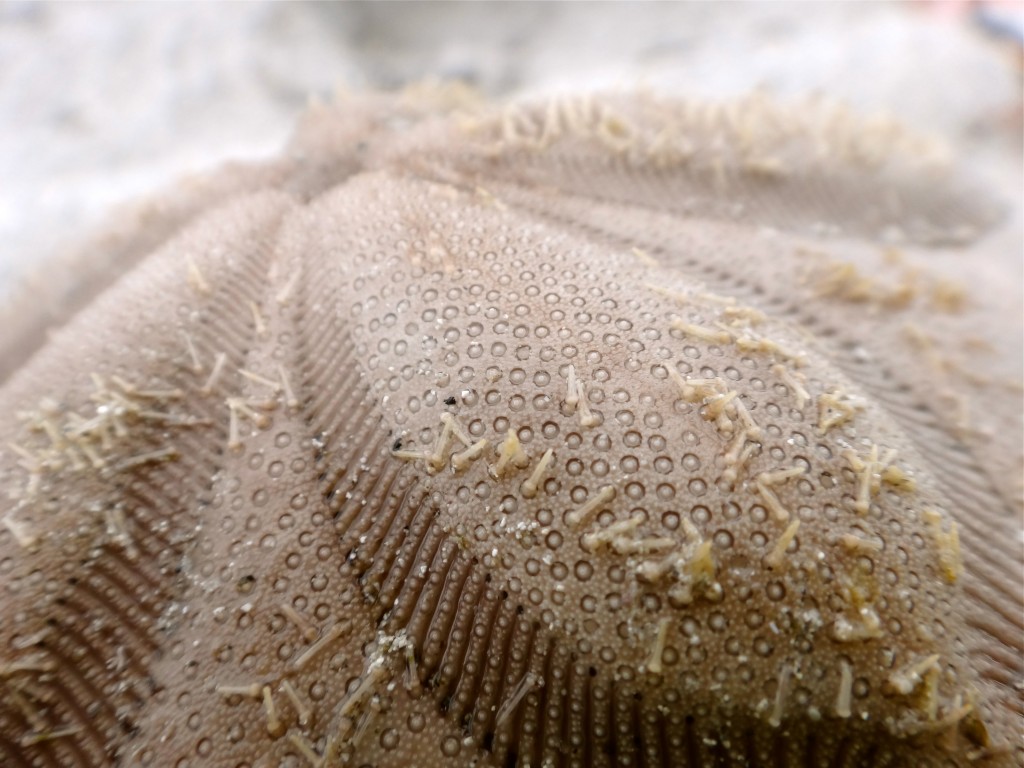 Due to the lack of edible parts and its relatively hard skeleton, sand dollars have very few predators. According to the “Legend of the Sand Dollar,” the Sand Dollar (or Holy Ghost Shell) symbolizes the birth, crucifixion, and resurrection of Christ. The flower on the side of the Sand Dollar resembles an Easter lily, with a five-pointed Star of Bethlehem as its center. On the underside of the shell is the outline of a Christmas poinsettia. The five narrow openings, or “lunules,” represent the five crucifixion wounds inflicted by Roman soldiers. When a sand dollar is broken open, there are five tiny white objects (the jaw apparatus) which resemble white doves in flight. These birds are called the Doves of Peace and Good Will.
Due to the lack of edible parts and its relatively hard skeleton, sand dollars have very few predators. According to the “Legend of the Sand Dollar,” the Sand Dollar (or Holy Ghost Shell) symbolizes the birth, crucifixion, and resurrection of Christ. The flower on the side of the Sand Dollar resembles an Easter lily, with a five-pointed Star of Bethlehem as its center. On the underside of the shell is the outline of a Christmas poinsettia. The five narrow openings, or “lunules,” represent the five crucifixion wounds inflicted by Roman soldiers. When a sand dollar is broken open, there are five tiny white objects (the jaw apparatus) which resemble white doves in flight. These birds are called the Doves of Peace and Good Will.
Here is one of the jaws/doves (lower right)…amazing.
Back in the Patch:
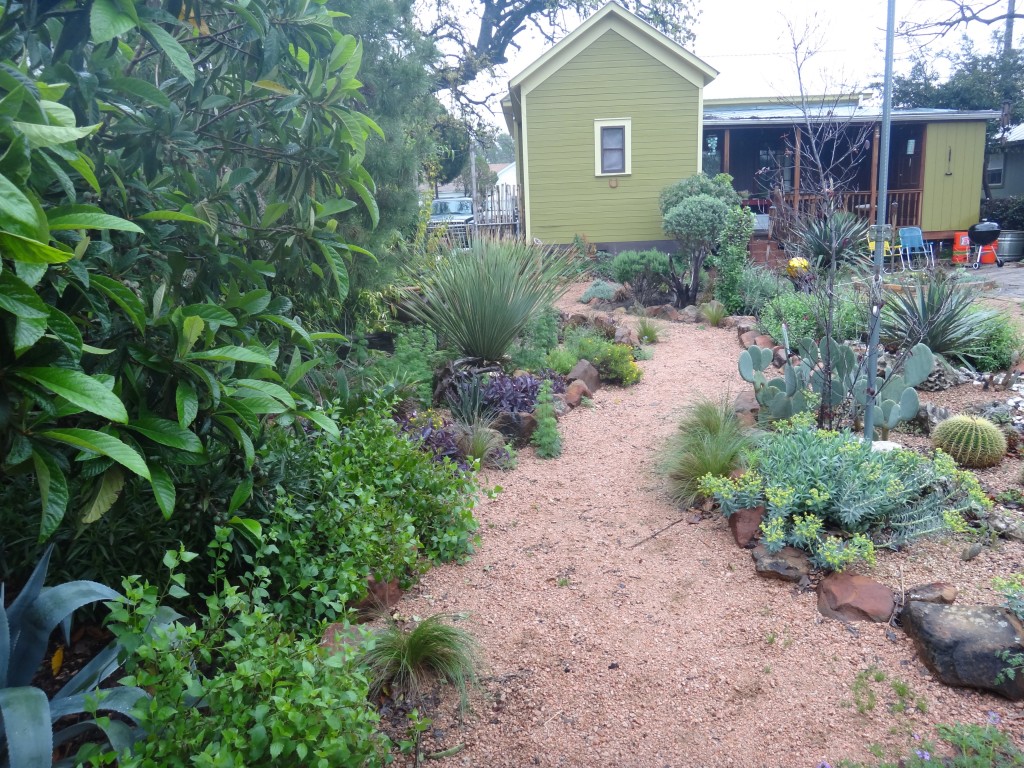
Rain, rain and some more rain has given everything a really good soaking.
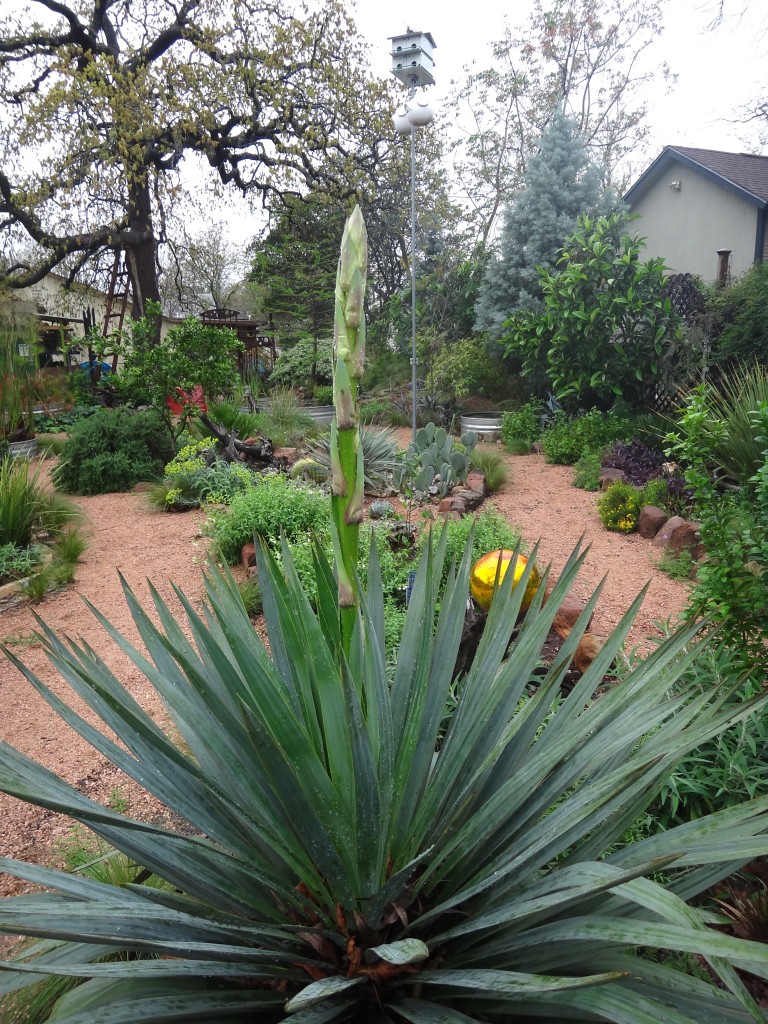
A large asparagus looking flower-spike is now shooting north above my soft leaf yucca, this is a first for this plant.
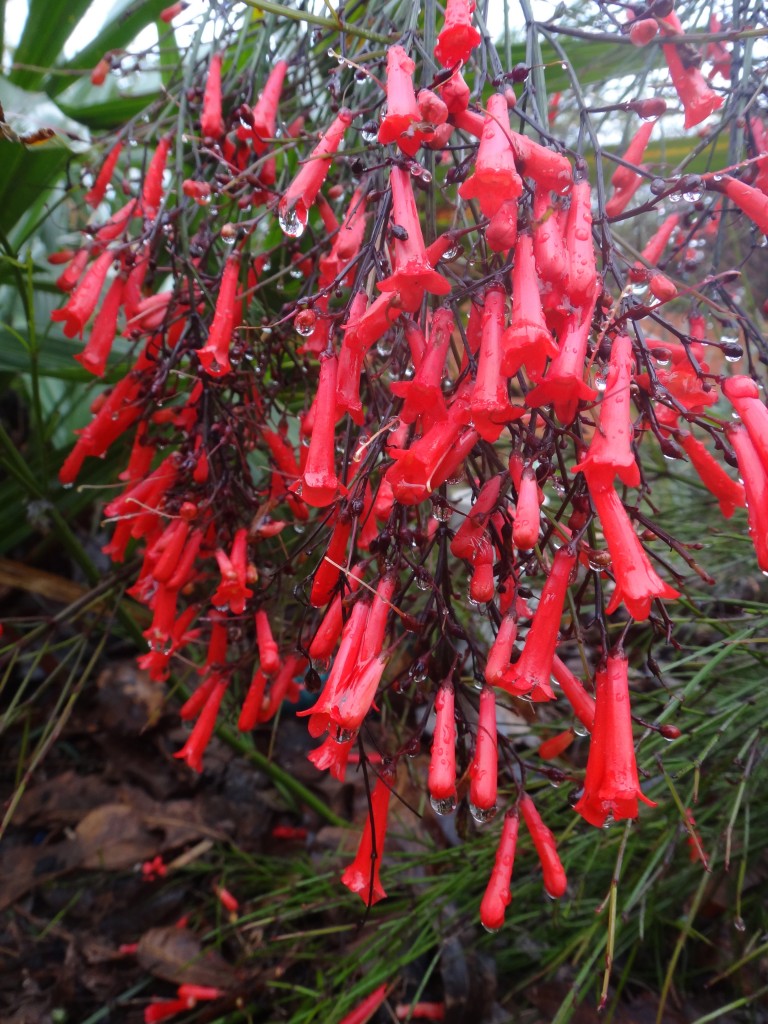
The flames of this Fire cracker have been dowsed by the rain.
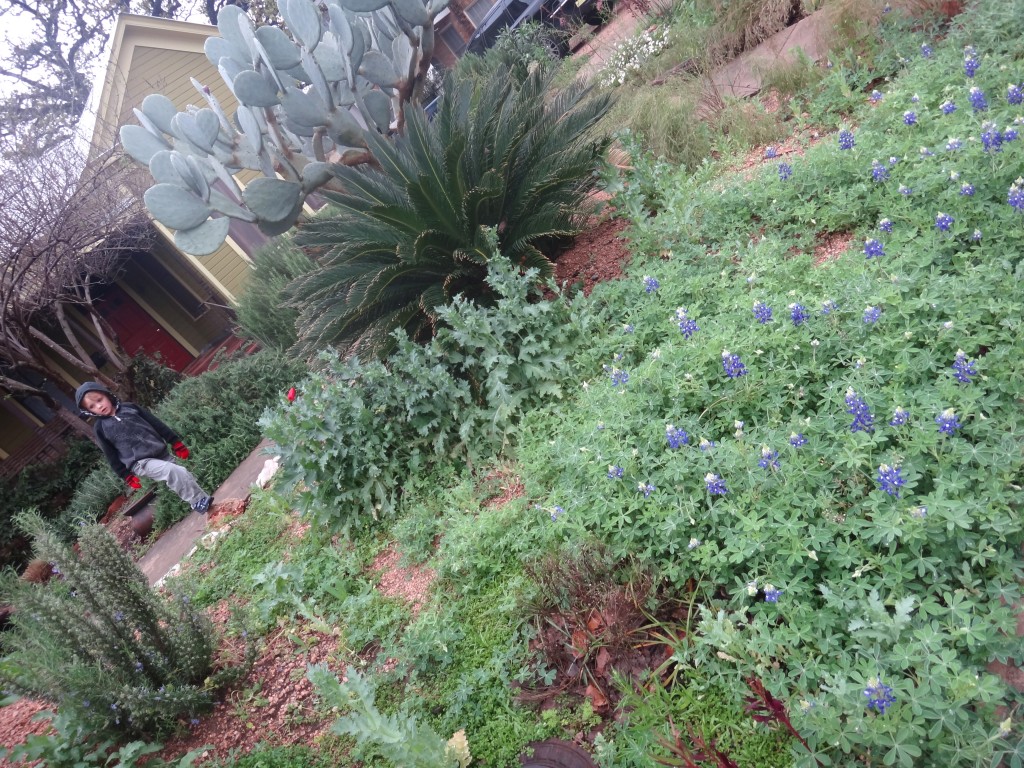
I have never had so many poppies and blue bonnets growing in the Hell-strip.
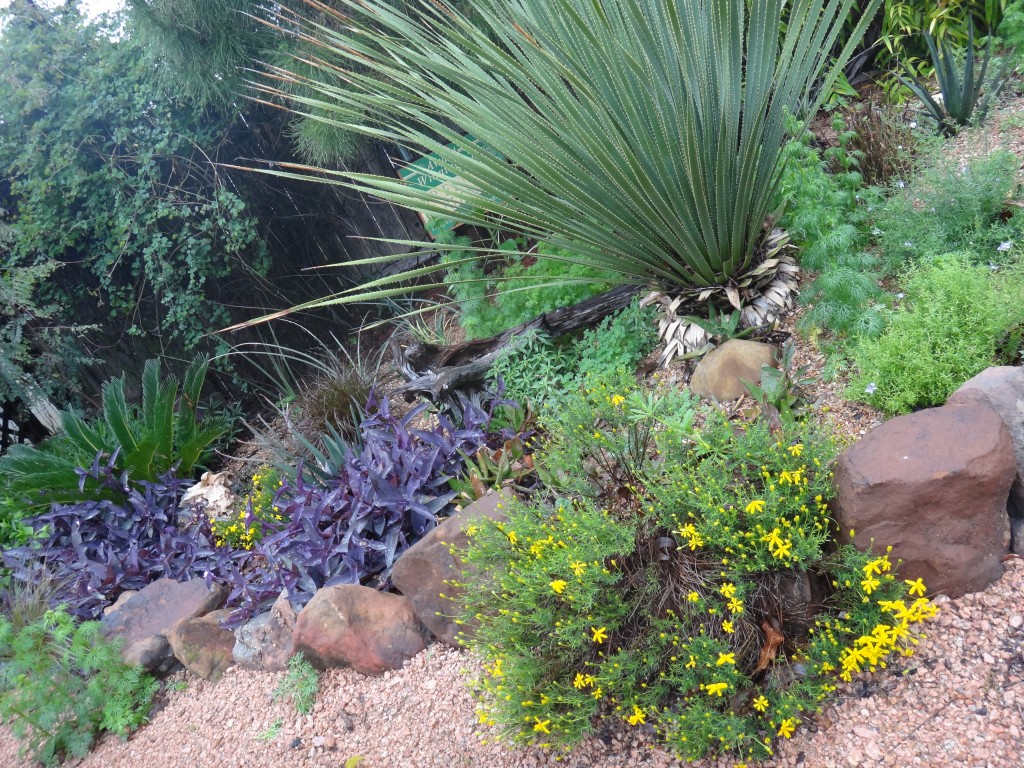
This sotol is reaching new heights, and as for my Artemesia ‘Powis Castle’?
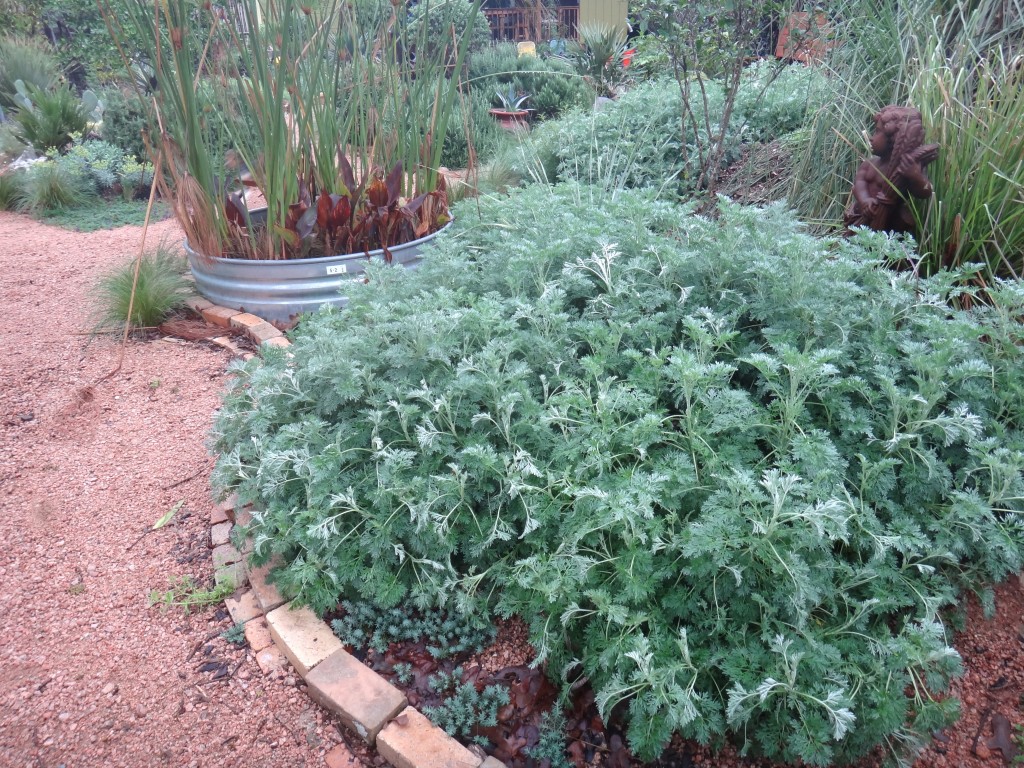
well they have formed large silvery clouds all over these mounded areas of the Patch.
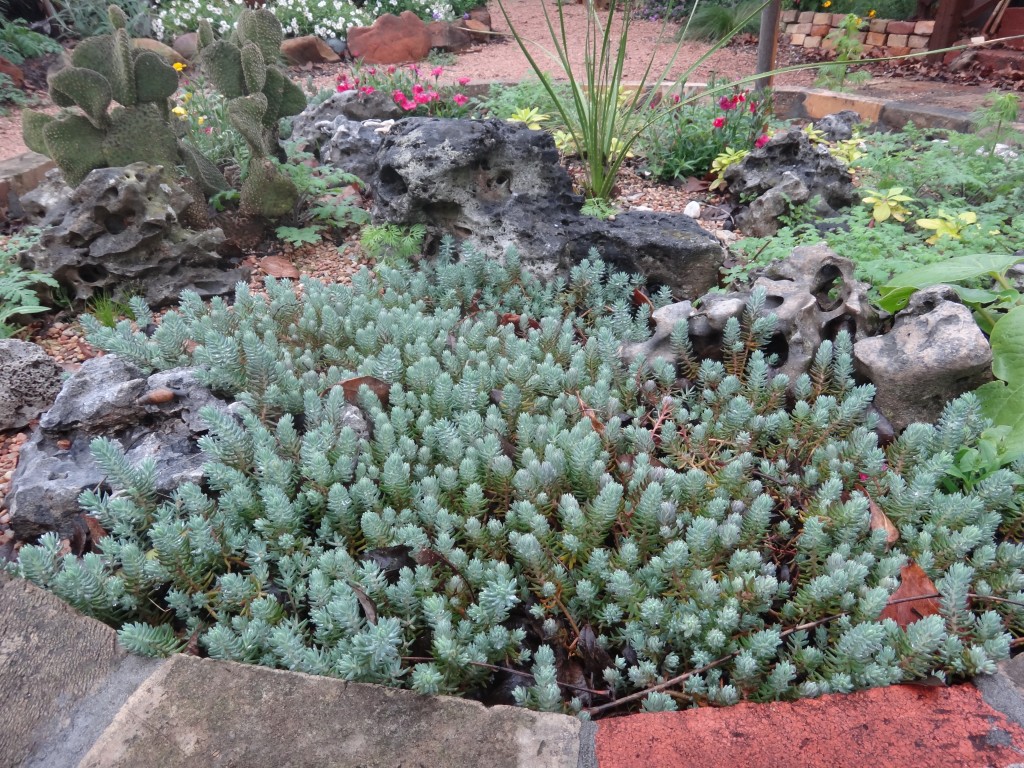
More silvers courtesy of this ever-spreading Sedum reflexum ‘Blue Spruce’.
Peas were harvested this week,
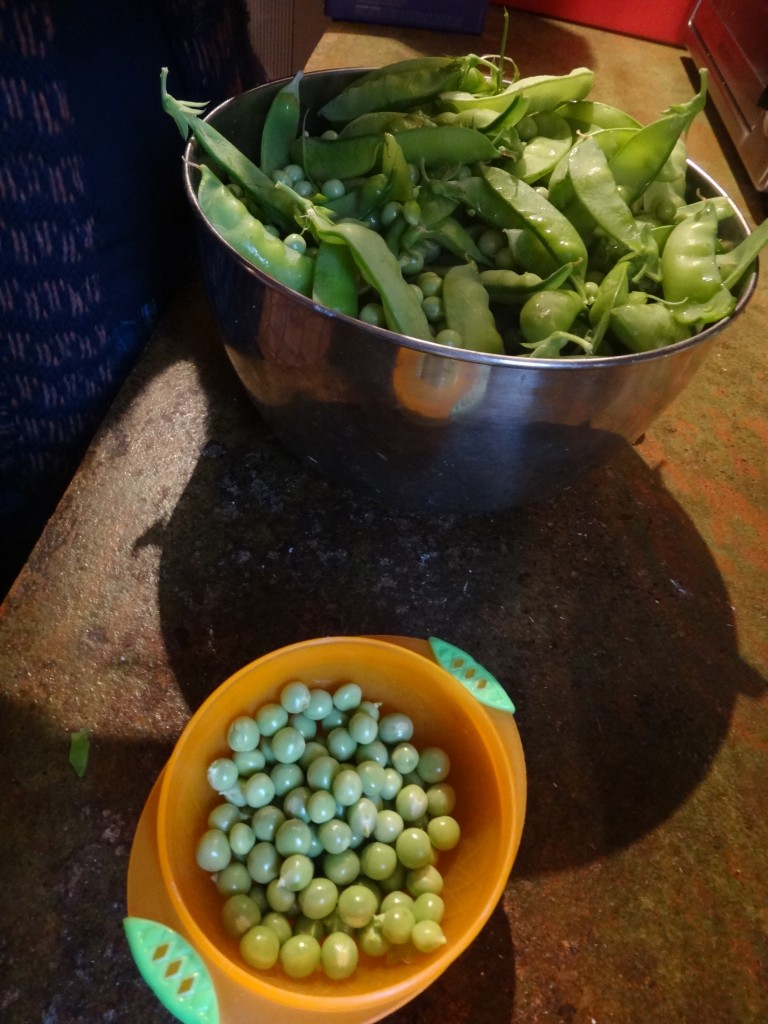
to the delight of Kumo who took great delight in hoovering them up as they bounced out of pods during the shelling process.
Finally:
We have now officially ascended the nerdom staircase to new snorting heights…

We have degenerated from rock tumbling, metal detecting and aircraft modelling kits (if this is possible) only to arrive at the riveting and rather startling juncture of stamp collecting and those irritating fiddly stamp hinges…Snort.
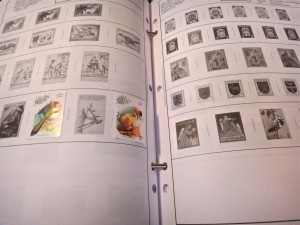
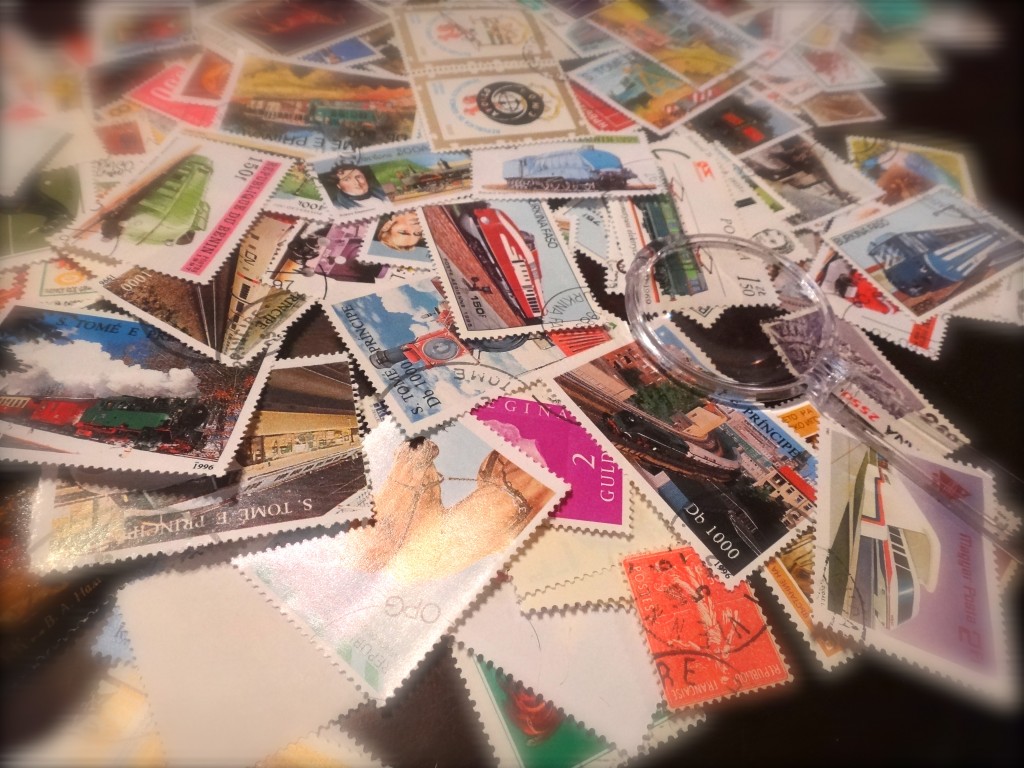 Is there a better activity to occupy us until SXSW and spring break is over?
Is there a better activity to occupy us until SXSW and spring break is over?
I think not…
Now, can you pass me a stamp hinge and where is the Republic of where-ever?
Stay Tuned for:
“Sweet Fairchild of Mine”
All material © 2012 for eastsidepatch. Unauthorized
intergalactic reproduction strictly prohibited, and
punishable by late (and extremely unpleasant)
14th century planet Earth techniques.
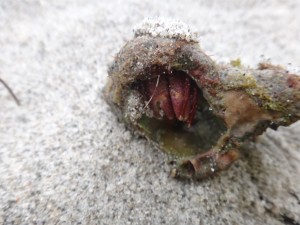
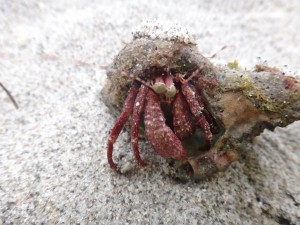
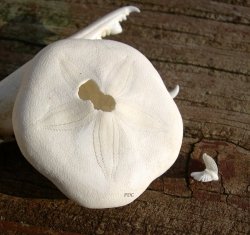
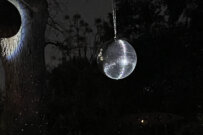
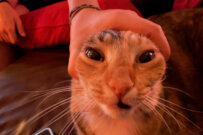




























































Comments on this entry are closed.
Learning gets to be fun at the patch. Awesome!
Always!
Wow…in all my years of visiting beaches, I’ve never seen a LIVE Sand Dollar. How lucky!
Good luck with Spring Break.
I feel very lucky to have found a live one Linda!…Amazing creatures.
Think of what all you could grow in Florida, where it never freezes.
Are those Powis Castle the ones you planted last summer from breaking off twigs and sticking them in the ground?
Congratulations on getting to relandscape the Bonnet House. That’s a resume builder.
I wish I was landscaping this garden Bob…Unfortunately it was only a visit.
And yes, freezes are far and few between in this neck of the woods…imagine the tropical paradise that could be quickly created in this environment.
The featured Powis Castle are my more established crop but the ones I planted from twigs have also done well.
Did you find any other gems among all the condos besides Bonnet house? My brother just bought a place in Lauderdale and I see a visit in my future. I have already told him he will need to take me to Fairchild Garden.
Hi Les.
Bonnet house is most definately worth a visit, it is a very unique house, and as a seasoned art student and totally inherent nerd…I loved it. I can relate to the obsession of the previous owners, as every gardener would, given such a fantastic canvas. Fairchild is next on my visitation list, more posts to come.
ESP.
Yes, I think I may add this place to the locations to visit when we finally make it down to see our friends who moved to Weston…
When I was Miss P’s age, my dad got me and my sister into stamp collecting (but nothing too serious – unlike the coin collecting)…of course, we also liked to make paperweights (essentially just rocks we found out in the yard that we then covered with stamps).
Hi Katina.
It is a great place to visit if the weather is not beach worthy…The interior of the house is quite amazing.
My sister and I launched into stamp collecting nerdish tendencies at a very young age.
Paperweights I am sure are on the horizon :-)
ESP.
I still have a cigar box I covered with stamps as a little girl (and that was a long, long time ago!). I believe the urge to collect (or treasure hunt), like the urge to garden, starts young and never quite fades away…. Fess up – did you put the sand dollar back in the water or did you take it home to your little wiggles?
That aerial of the Bonnet House is telling. Our non-lawned front area is a tiny shout out to that idea of preserving the way a place looks with as little intervention as possible. I can’t turn back the tide of development in my neighborhood but I can help preserve plant density and diversity in the spaces around our home.
Hi TD.
My eldest has been collecting things since she was a baby. Even now if we go to a festival, within 20 minutes of being there she will have invariably found someones wallet, a credit card, keys and a bunch of loose change!
I did return the sand dollar to the water, it was alive after all. When I put it back in the sand it immediately and very quickly buried itself…what a find.
Bonnet House was a fun place to visit, the artistic owners really put their souls into that place, and yes it does not take much to preserve an area…just the right attitude.
ESP.
Well, ESP, that can’t be all bad a business trip to Florida. Looks like you had a bit of fun in the bargain. Beach combing is such a joy especially when you find a treasure. I don’t think that sand dollar would be moving very far having lost all its moving apparatus. Did you bring him home with you?
Back home- what a pea crop. leg of lamb and fresh peas with mint. Yummy. The patch is looking good.
Hi Jenny.
Florida is certainly interesting and a very culturally diverse area. I have been staying in the Design District in Miami, and it is mostly all French at this time of the year…amazing!…French food, French bakeries, croissants and ice cream.
It was an interesting trip but now I am looking forward to being back in Austin with my peeps.
The sand dollar that had lost it’s tackle was not my sand dollar…mine was returned to the sand and very healthy, I used this image to highlight the bird-shaped jaws :-)
We did have a really good pea crop, and I will be planting them again next year. Leg of lamb, fresh peas, mint sauce…Jenny you have to stop!
ESP.